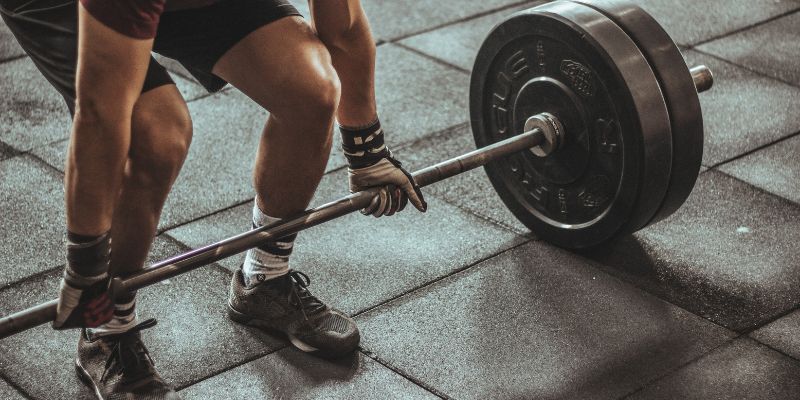What Is EPOC (Excess Post-Exercise Oxygen Consumption) And Why It Matters
Oct 11, 2024 By Noa Ensign
Epoc is short for Excess Post-Exercise Oxygen Consumption. It's the body's means of healing following vigorous exercise. Your body consumes more oxygen as you exercise. It is to assist muscle activity and energy needs. Your body continues to consume more oxygen even after you finish the workout. That's how your body burns calories long after a workout.
The EPOC rises with the increasing intensity of the exercise. Often referred to as the "afterburn" effect, anyone trying to raise their fitness level should pay great attention to knowing EPOC, which will enable you to decide better how to schedule your exercises. It also allows you to reach your fitness objectives rapidly. We'll discuss EPOC in this guide, how it works, and why it's essential for your fitness and health.
How Does EPOC Work?
Your body demands extra energy during vigorous workouts. Oxygen fuels the generation of this energy. Your body goes into an oxygen deficit as you increase effort. It implies that your muscles are so active that oxygen alone cannot satisfy the energy need. Your body seeks to reestablish this oxygen balance once you stop working out. Extra energy is needed for this process, which increases oxygen use even beyond stopping exercise.
EPOC then becomes relevant here. The body consumes oxygen faster to heal, fix, and renew itself. The intensity of the exercise will determine how long EPOC lastshours or more. Your body might continue burning extra calories for up to 24 hours following a demanding workout. This process includes muscle healing, eliminating waste products, including lactic acid, and restoring body temperature to normal levels.
The Science Behind EPOC
Your body uses various oxygen-dependent activities while you work out. These cover restoring muscular tissue, refilling energy stores, and controlling body temperature. The body uses oxygen to finish these chores during EPOC. EPOC occurs for the following several scientific reasons:
Rebuilding ATP stores
Your muscles' energy currency is ATP or adenosine triphosphate. Your muscles run empty of ATP after vigorous activity. Your body replenishes these energy supplies using oxygen during EPOC. This process aids muscle recovery and prepares for the following physical exercise.
Clearing lactic acid
Exercise intensely, and your body generates lactic acid as a side effect. Muscle tiredness might result from too high lactic acid levels. Oxygen breaks down and eliminates lactic acid during EPOC, helping ease pain and hasten healing.
Restoring oxygen levels
Your muscles and blood's decreased oxygen levels follow from heavy activity. During EPOC, the body replenishes these levels using extra oxygen. It guarantees your body is ready for the following exercise by helping it to recover normal function and balance.
Elevated heart rate and breathing
Your heart rate and breathing remain high to help you recover even when your workout stops. Maintaining these purposes calls for more oxygen. EPOC helps your body progressively return to rest, promoting general recovery and muscular healing.
Types of Exercise That Cause EPOC
Not every workout increases EPOC to the same degree. The intensity and length of the activity significantly influence your experience with afterburn. Your body will require more oxygen later on as you work harder and longer. Some typical forms of exercise that could increase EPOC are these:
High-Intensity Interval Training (HIIT)
HIIT, or high-intensity interval training, alternately consists of rest periods or moderate intensity between brief bursts of intensive activity. This approach causes a notable oxygen shortfall by pushing your body to its limits. The body employs EPOC in recovery to rebuild energy stores, heal muscles, and replace oxygen, producing a powerful afterburn effect.
Strength Training
Lifting heavy weights or doing bodyweight exercises, including push-ups or squats, tears away muscle fibers. Muscle healing and energy replenishment both depend on considerable oxygen. The stronger the strength training, the higher the EPOC, which causes extended calorie burning even long after your workout finishes.

Sprinting
Sprinting is a brief but demanding track, treadmill, or bike workout. It increases your heart rate quickly and requires your body to work hard to heal later. The body repairs muscles clears lactic acid and employs EPOC to restore oxygen levels to normal, producing a significant afterburn impact.
Circuit Training
Circuit training alternates a quick series of strength and aerobic activities. It challenges your muscles and maintains your heart rate raised. Aerobic and anaerobic activity produces a high EPOC level since your body needs more oxygen post-workout to recuperate, heal, and replace energy.
How to Maximize EPOC in Your Workouts
There are several ways you might increase EPOC's impact if you choose to make use of it:
- Increase Intensity: Changing your workouts' intensity can help effectively raise EPOC. Recovering from high-intensity exercises calls for extra oxygen and energy.
- Incorporate Strength Training: Resistance exercise or weight lifting builds muscle, which raises EPOC in turn. Concentrate on compound exercises such as deadlifts, squats, and push-ups for the greatest results.
- Try Interval Training: Because HIIT alternates between hard effort and rest, it's a fantastic technique to boost EPOC. Though you don't have to work out long, challenge yourself during the high-intensity intervals.
- Shorten Rest Periods: Reducing the time you rest between sets or workouts will help maintain a high heart rate, boosting EPOC.
- Mix Cardio and Strength: One exercise combining strength and cardio will assist you in reaching a better EPOC result.

Conclusion:
Since EPOC keeps burning calories long after exercise, increasing fitness is vital. By knowing and using EPOC, you may maximize the effectiveness of your exercise. Exercises that include HIIT, strength training, and sprinting are excellent for raising EPOC and accelerating fat loss and general fitness. Remember, high-intensity, short rest intervals and mixing cardio with strength training are the secrets to maximizing EPOC. Although EPOC is helpful, it should be used with a sensible diet and regular exercise schedule for optimum effects. Including EPOC-oriented exercises will help you improve your fitness program and reach your health objectives more successfully.







